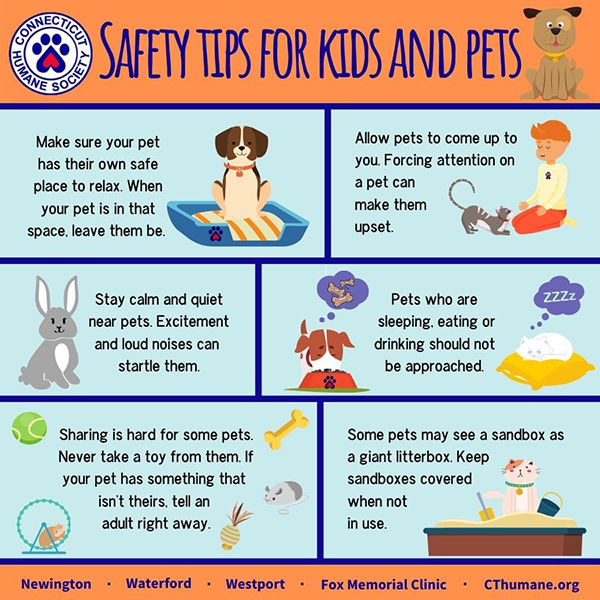

Help your cat and kid(s) build a respectful relationship by following a few easy steps. These are especially important when bringing home a new cat to help establish a good relationship between your child and kitty right from the start.
Learn to speak cat! Since our cats don’t speak our language, we can learn to “speak” theirs.
Cat-friendly manners:
- Stay calm and remember to use indoor voices.
- Walk—don’t run—when around the cat so they feel more comfortable.
- Do not corner a cat or force them to accept petting. Reach out with your hand to allow the cat to sniff before being pet. If the cat backs away, they want to be left alone for now.
- Cats find hugs and kisses very scary. Instead, pet them gently with an open palm. Remember: One hand’s enough, two hands are too rough.
- Never disturb a cat while they’re eating, sleeping or using the litter box.
- Avoid staring and making direct eye contact (cats find this rude).
- Sometimes cats are excited after playing with one another or with stimulating toys like wands or balls. After play, give them a calming-down period of 10 minutes before petting.
- Create a “safe place” for the cat and make sure everyone knows that this area is off limits for children. A safe place can be a spare bedroom, hidey house, under the bed, etc.
- Children should be seated when holding, petting and playing with cats.
Positive ways for children and cats to interact:
- Use wand toys or laser pointers to play with cats instead of your hands.
- Give your cat a cardboard box to play in—then sit back and watch them have fun!
- Pet cats gently on their head or back, remembering not to pet their belly or legs. Always pet in the direction the fur grows (from their head to their tail).
- Allow your child to feed the cat under adult supervision.
- Allow your child to give the cat one treat each day when returning from school or daycare. This creates a positive association between the cat and the child.
Picking up a cat:
Many cats prefer not to be picked up, particularly by children. But if your cat is open to being held, help your child by having them sit down first. Under direct supervision (especially during the first few weeks that kitty is adjusting) be sure that your child:
- Supports the cat’s full weight with both arms.
- Holds the cat against their body for added support.

